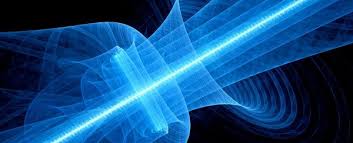
Breaking News
We Americans Need to Dig Deep into Historical Perspective
 A timeless clip of Michael Burry explaining how he used credit default swaps...
A timeless clip of Michael Burry explaining how he used credit default swaps...
 The next financial crisis won't start in a bank lobby. It's already brewing in the market
The next financial crisis won't start in a bank lobby. It's already brewing in the market
Top Tech News
 This tiny dev board is packed with features for ambitious makers
This tiny dev board is packed with features for ambitious makers
 Scientists Discover Gel to Regrow Tooth Enamel
Scientists Discover Gel to Regrow Tooth Enamel
 Vitamin C and Dandelion Root Killing Cancer Cells -- as Former CDC Director Calls for COVID-19...
Vitamin C and Dandelion Root Killing Cancer Cells -- as Former CDC Director Calls for COVID-19...
 Galactic Brain: US firm plans space-based data centers, power grid to challenge China
Galactic Brain: US firm plans space-based data centers, power grid to challenge China
 A microbial cleanup for glyphosate just earned a patent. Here's why that matters
A microbial cleanup for glyphosate just earned a patent. Here's why that matters
 Japan Breaks Internet Speed Record with 5 Million Times Faster Data Transfer
Japan Breaks Internet Speed Record with 5 Million Times Faster Data Transfer
 Advanced Propulsion Resources Part 1 of 2
Advanced Propulsion Resources Part 1 of 2
 PulsarFusion a forward-thinking UK aerospace company, is pushing the boundaries of space travel...
PulsarFusion a forward-thinking UK aerospace company, is pushing the boundaries of space travel...
 Dinky little laser box throws big-screen entertainment from inches away
Dinky little laser box throws big-screen entertainment from inches away
 'World's first' sodium-ion flashlight shines bright even at -40 ºF
'World's first' sodium-ion flashlight shines bright even at -40 ºF
Global Quantum Communication Network has Been Proven Feasible With 20,000 km...

The first exchange of a few photons per pulse has been performed between two different satellites 20,000 kilometers apart. This was between the Russian GLONASS constellation and the Space Geodesy Centre of the Italian Space Agency.
The longest channel length previously demonstrated was around 7,000 km, in an experiment using a Medium-Earth-Orbit (MEO) satellite that we reported in 2016.
Arxiv – Towards quantum communication from global navigation satellite system (8 pages).
Satellite-based quantum communication (QC) is an invaluable resource for the realization of a quantum network at the global scale. In this regard, the use of satellites well beyond the low Earth orbit gives the advantage of long communication time with a ground station. However, high-orbit satellites pose a great technological challenge due to the high diffraction losses of the optical channel, and the experimental investigation of such quantum channels is still lacking. Here, we report on the first experimental exchange of single photons from a global navigation satellite system (GNSS) at a slant distance of 20 000 km, by exploiting the retroreflector array mounted on GLONASS satellites.

 The AI money machine!
The AI money machine!

